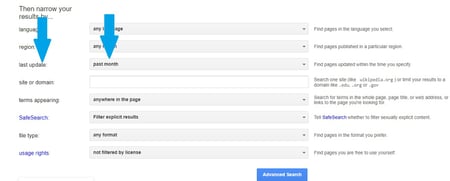There’s never been a better time to start working with Instagram influencers.
If you’re still on the fence about it, perhaps having a look at some of the latest stats might help motivate you: Like how Instagram currently ranks as the most impactful influencer channel. And how 60 percent of Instagram users say that they’ve learned about a product or service through the social network.
While the studies are pretty clear on the impact of Instagram for businesses, one thing isn’t so clear: How exactly do you find Instagram influencers? And with millions of influencers available — literally — how do you know they’ll be a great fit for your brand?
All these questions and more will be answered as we take you through the four steps to finding the right Instagram influencers for your business.
But, before you start your search, it’s essential to know what your goals are.
Start By Defining Your Campaign Goals
Like every other marketing campaign, it’s important to know and understand what you’re trying to achieve. Are you trying to increase brand awareness? Are you aiming to increase your social media followers and engagement? Do you know who your target audience demographic is for the campaign?
Whatever your goal is will help guide how to approach your overall campaign.
For instance, if you’re trying to increase brand awareness, the influencers you work with can conduct product reviews or mention some of your products or services to their followers. If you want to convert existing fans into customers, you may want to run a campaign with high audience overlap.
It’s important to outline your goals first because this will help you understand the type of content and influencer partnership you’ll ultimately need to generate in order to meet these goals. You’ll also be able to effectively communicate these goals to your influencers.
Once you’re clear on your goals, it’s time to tackle that all-important question — How to find Instagram Influencers.
1. Conduct a Google Search (Free, But Time Consuming)
There’s a reason why Google receives over 3.5 billion search queries per day. Compared to other search engines, it’s able to give users the most relevant search results.
Let’s say you own a hair and makeup brand and are looking for top Instagram beauty influencers. A quick Google search will give you a handful of results, often curated by hand. From there, you can parse manually through the options.
But of course, an Instagram influencer who was great last year, might not be so relevant this year. These articles and lists often lack metrics that can help you decide if this person is a good fit for your audience as well.
So, to get the latest results, you can head to your Advanced Search section and change the “last update” section to “past month.”

This will give you the latest posts. Conducting a Google search is free, but it can be time-consuming to go through all the results, and even the results there are quite limited. You also have to consider potential biases (such as if those influencers are represented by the content writer).
2. Use an Influencer Marketing Platform
An influencer marketing platform offers a significant advantage for brands hoping to scale their influencer marketing programs:
- Audience demographic, geographic, and psychographic details, so you can
- Millions of influencers available
- Real-time data
- The benefit of anti-fraud metrics, like Audience Health Scores
- Additional tools for end-to-end influencer management, like an influencer CRM and campaign measurement tools
As a result, you can automate a lot of the influencer selection process.
For instance, with Julius, you’re able to find and analyze influencers based on their geographic location, audience demographics, audience psychographics, brand mentions in their posts, engagement rates with followers, and the likelihood they have active and engaged followings (not bots).
These metrics help you understand your potential influencers better. Keep in mind there is a difference between truly unbiased data collecting platforms and opt-in influencer networks. In the latter, influencers sign up to work with the platform, meaning the results can be limited and/or biased. And you also have the added issue of paying a commission for each activation.
3. Measure Their Audience Engagement Rate
Once you have a good pool of potential influencers, checking their engagement rate is the next step.
Engagement can mean a lot of different things, but the strongest performing campaigns start when brands look at the engagement rate with a target audience. Truly, the only way to gauge this is to partner with a platform that offers comprehensive analytics into an influencer's audience: where they live, what their top topical interests are, and Especially considering that Instagram is reducing the significance of Likes, and hiding other metrics from public view.
Remember, it’s not all about how many followers they have. In fact, engagement is more important than the number of followers or likes — now considered "vanity metrics" — because it will help you understand if you’ll be getting your money’s worth.
Why? Because, the greater the engagement, the more influence they have on their followers. It means that their followers are paying attention to their content and respect their opinion, suggestions, and partnerships.
Influencer platforms provide these details for each influencer, but if you’re going to go about this the manual way, remember that:
- An average engagement rate is 1-3%.
- A good engagement rate is 3-5%.
- Anything higher is a great find.
- But above all, engagement with the target audience is the most valuable benchmark.
- And of course, high engagement only matters if the influencer has a good audience health score — that is, they aren't buying followers.
How do you calculate influencer engagement?
You can have a look at their posts from the previous month. Add the number of comments and likes, divide that number by the number followers, and then multiply that by 100.

4. Analyze an Influencer's Content
Before reaching out to an influencer, it’s essential to understand the type of content they create. This will help you see if their content aligns with your brand and if this truly will be a great fit for you.
When analyzing their content, be sure to take into consideration content outside of Instagram as well: "What type of content do they post? Is this what my market wants to see online?"
Remember that once you connect with an influencer, and they post about your brand on their platforms, your brand is now associated with that person. So, ask yourself: Am I okay with having my brand being associated with this individual?
A brand safety tool can help you identify instantly if there is any racy, adult, medical, or controversial content in the influencer's feed. It may be worth the extra investment if your brand is sensitive to such things.
Finding the right Instagram influencer can be time-consuming. But, considering the impact of the social network, it will all be worth it.
-1.png?width=239&name=Julius%20By%20Triller%20-%20Wordmark%20-%20Purple%20(1)-1.png)







